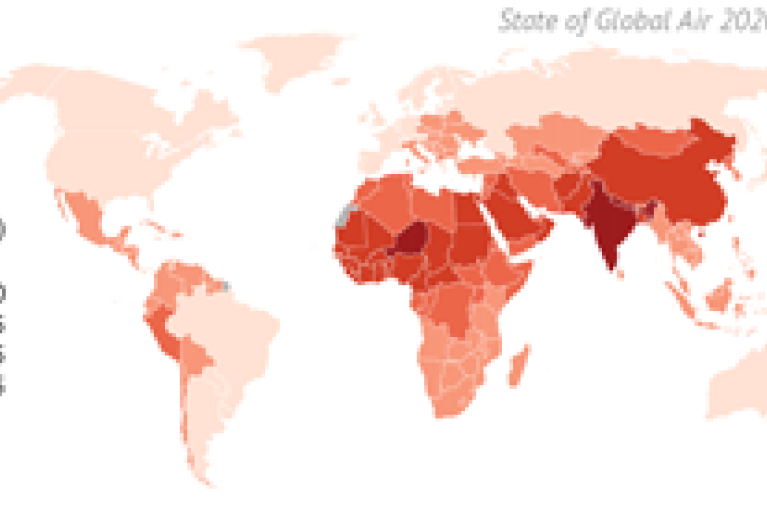Hot Spots
PM2.5 exposures are highest in Asia, Africa, and the Middle East.
Most people on Earth are exposed to harmful levels of PM2.5 pollution, with the highest exposures occurring in Asia, Africa, and the Middle East. The 10 countries with the highest PM2.5 levels are India, Nepal, Niger, Qatar, Nigeria, Egypt, Mauritania, Cameroon, Bangladesh, and Pakistan. The 10 countries with the lowest PM2.5 levels are Australia, Brunei Darussalam, Canada, Estonia, Finland, Iceland, New Zealand, Norway, Sweden, and the United States.
Sources of PM2.5 pollution vary within and between countries and regions, and the mix of sources changes over time. Some places are restricting activities or emissions, while others are increasing the use of coal and other major drivers of PM2.5 pollution.
92%
of the world's population lives in areas that exceed Interim Target 4 (10 µg/m3)
81%
of the world's population lives in areas that exceed Interim Target 3 (15 µg/m3)
65%
of the world's population lives in areas that exceed Interim Target 2 (25 µg/m3)
51%
of the world's population lives in areas that exceed Interim Target 1 (35 µg/m3)
Uneven progress
Some regions have seen modest improvements, but progress is stalled in others.
On average, global PM2.5 exposures declined slightly from 2010 to 2019. The most notable improvements occurred in the GBD Super Region of Southeast Asia, East Asia, and Oceania, driven largely by air quality controls in China. Other regions, particularly in Africa and the Middle East, have seen increases in PM2.5 exposures. Exposures have remained persistently high in South Asia.
Figure C. Trends in average annual PM2.5 concentrations globally and in the GBD Super Regions.
Fourteen of the world’s 20 most populous countries have seen modest declines in PM2.5 levels since 2010. Even countries with some of the highest exposures in the world — India, Pakistan, and Bangladesh — have begun to see modest improvements, much of it coming in the last few years of the decade. However, populous countries in sub-Saharan Africa saw substantial increases in PM2.5 over the same time period.
Figure D. Change in population-weighted annual average PM2.5 exposure in the 20 most populous countries, 2010–2019. Toggle to switch estimates.
disparities continue
Less-developed countries tend to have higher PM2.5.
Disparities in socioeconomic development contribute to disparities in exposure and health. To capture different facets of development that are relevant to health outcomes, the GBD project uses a metric called the sociodemographic index (SDI).
Lower SDI tends to be associated with higher exposures to PM2.5. Countries in sub-Saharan Africa generally have the lowest SDI and the highest PM2.5 levels, while high-income countries experience the lowest PM2.5 exposure. However, the correlation between SDI and PM2.5 is only moderate. This is likely because PM2.5 is a regional pollutant that can be carried long distances, affecting neighboring countries regardless of their levels of development. Higher PM2.5 exposures in some more-developed countries in North Africa and the Middle East may also reflect impacts from local dust sources as well as wind-blown dust from the Sahara, which would not be expected to be associated with SDI.
Figure E. PM2.5 exposures in countries with different levels of sociodemographic development. Dots represent individual countries, color-coded according to GBD Super Region. Dot size reflects population size.


